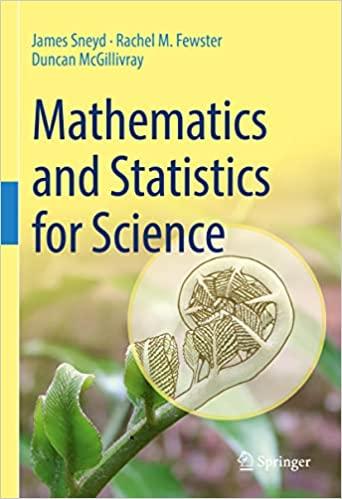The Geometric distribution is a probability distribution thats widely used in statistical modelling. Well see more details
Question:
The Geometric distribution is a probability distribution that’s widely used in statistical modelling. We’ll see more details in Chapter 38. Here we look at just one example called Geometric(0.5). If you’re playing a series of games and you have a 50%
chance of winning each game, the Geometric(0.5) distribution counts how many games you lose before your first win. The setting is similar to Exercise 28.7, but instead of playing 10 games, you now keep playing until your first win, and then you stop.
A random variable Y that follows the Geometric(0.5) distribution has the probability function fY(y) = P(Y = y) = 0.5y+1
, for y = 0, 1, 2, . . . .
When we write y = 0, 1, 2, . . . , we mean there’s no fixed maximum for the values that Y can take. However, in practice, it’s unlikely that we’ll observe a value greater than about 9 or 10. Parts of the probability function and CDF ofY are shown below, with all probabilities rounded to 3 decimal places.
a. Using the formula fY(y) = P(Y = y) = 0.5y+1 , fill in the missing probabilities p1 and p2. Hence also fill in the missing cumulative probabilities c1 and c2.
b. What is P(Y ≥ 10)?
c. In Exercise 28.7, you can check that P(X ≥ 3) = 0.508, but in this question you’ll get P(Y ≥ 3) = 0.125. Yet Since P(win) = P(lose) = 0.5, it doesn’t matter if you count wins or losses. X counts the maximum number of consecutive wins in 10 games, whereas Y counts the number of consecutive losses before your first win.
both events imply you had three consecutive outcomes the same, where each outcome has a 50% chance. Explain why P(X ≥ 3) is so much larger than P(Y ≥ 3).
Step by Step Answer:

Mathematics And Statistics For Science
ISBN: 9783031053177
1st Edition
Authors: James Sneyd, Rachel M. Fewster, Duncan McGillivray






